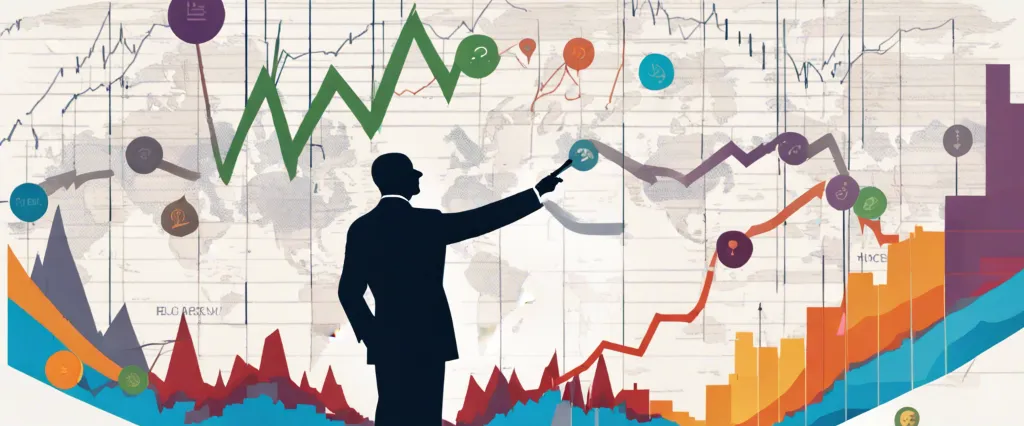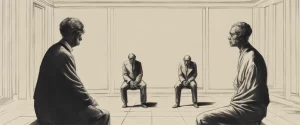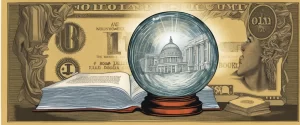——The Federal Reserve and the Financial Crisis by Ben Bernanke & The Big Short by Michael Lewis

In the realm of financial literature, two remarkable books have emerged to shed light on the cataclysmic events surrounding the 2008 global financial crisis. Providing distinct yet complementary perspectives, The Federal Reserve and the Financial Crisis by Ben Bernanke, the former Chairman of the Federal Reserve, and “The Big Short” by acclaimed author Michael Lewis, delve into the heart of the crisis, unraveling its complex origins, the mesmerizing web of intricate financial instruments, and the profound impact it had on the world economy. Both authors offer unique vantage points: Bernanke, drawing from his insider experience managing the crisis, and Lewis, renowned for his ability to capture the human narratives behind historical events. As we embark on this comparative study, we aim to explore the overlapping themes, differences in perspectives, and implications of their narratives, ultimately seeking a deeper understanding of one of the most tumultuous episodes in recent history. Through their respective lenses, Bernanke and Lewis will guide us through the labyrinth of financial intricacies and human folly that result in an intricate tapestry, revealing the triumphs and failures of institutions and individuals alike in the face of unprecedented adversity.
Brief Summary of Two Books
The Federal Reserve and the Financial Crisis by Ben Bernanke
The Federal Reserve and the Financial Crisis” by Ben Bernanke is a comprehensive analysis and firsthand account of the 2008 financial crisis, written by the former Chairman of the Federal Reserve. In this book, Bernanke recounts the events leading up to the crisis, the actions taken by the Federal Reserve to mitigate its impact, and the lessons learned.
The book starts with an overview of the historical context and economic conditions leading up to the crisis. Bernanke explains the housing bubble, financial market imbalances, and the various factors that contributed to the crisis. He also discusses the role played by financial institutions, policymakers, and regulators in exacerbating the situation.
Bernanke then delves into the response of the Federal Reserve to the crisis. He details the unprecedented measures and interventions implemented to stabilize the economy and prevent a complete collapse of the financial system. Bernanke explains the rationale behind these decisions, such as the lowering of interest rates, the injection of liquidity into the markets, and the implementation of unconventional policies like quantitative easing.
Throughout the book, Bernanke addresses the criticism and controversies surrounding the Federal Reserve’s actions during the crisis. He provides an in-depth analysis of the risks, trade-offs, and challenges faced by policymakers throughout this period. Bernanke also explores the role of communication and transparency in shaping public perception and confidence in the central bank.
Additionally, Bernanke emphasizes the importance of learning from the crisis and making necessary reforms to prevent its recurrence. He discusses the need for improved regulation, stronger financial institutions, and a better understanding of the interconnections within the global financial system.
In summary, “The Federal Reserve and the Financial Crisis” offers a comprehensive account of the actions taken by the Federal Reserve to address the 2008 financial crisis. Bernanke provides valuable insights into the complexities of the crisis, the decisions made by policymakers, and the lessons learned from this pivotal event in recent economic history.
The Big Short by Michael Lewis
The Big Short” by Michael Lewis is a non-fiction book that delves into the events leading up to the financial crisis of 2008. It tells the story of a handful of individuals who foresaw the impending collapse of the housing market and took advantage of the system’s flaws to profit from it.
Lewis introduces readers to four main characters: Michael Burry, a brilliant but eccentric hedge fund manager; Steve Eisman, a savvy and outspoken investor; Greg Lippmann, a bond trader with a keen eye for risks; and Charlie Ledley and Jamie Mai, a duo of small-time investors with big aspirations. These individuals recognized the housing bubble forming in the early 2000s, as well as the deeply flawed mortgage-backed securities market that was propping it up.
Despite being widely dismissed and even ridiculed by Wall Street professionals, Burry, Eisman, Lippmann, Ledley, and Mai all independently discovered how to bet against the housing market. They took advantage of what they saw as the irrational exuberance and excessive risk-taking in the mortgage industry, and bet heavily against subprime mortgages and mortgage-backed securities using complex financial instruments known as credit default swaps.
As the bubble continued to grow, the protagonists faced numerous challenges, including skepticism from their peers, struggles with the financial institutions they were betting against, and the immense pressure of their own investments. However, as the real estate market began to crumble and mortgage defaults surged, their bets started paying off handsomely.
Lewis weaves their intertwined stories together with a blend of technical explanations and colorful anecdotes, offering insights into the inner workings of the financial industry and the systemic issues that ultimately led to the collapse of the housing market. With a mix of humor, outrage, and technical expertise, he highlights the failures of Wall Street, the incompetence of regulators, and the devastating impact felt by ordinary individuals who were caught up in the subsequent global financial crisis.
The Big Short” serves as a cautionary tale, encouraging readers to question the stability and integrity of the financial markets and the institutions that shape them.
Comparison between Two Books

Similarities in Financial Documentary
Both “The Federal Reserve and the Financial Crisis” by Ben Bernanke and “The Big Short” by Michael Lewis delve into the complexities of the financial crisis and provide insights into the factors that led to its occurrence. While one can argue that Bernanke’s work is more of an analysis and account of his experiences as the Chairman of the Federal Reserve during the crisis, while Lewis’ book takes a more narrative approach, there are still notable similarities in their portrayal of the financial documentary:
1. In-depth analysis: Both books provide a thorough examination of the intricate details surrounding the financial crisis. Bernanke explains the actions taken by the Federal Reserve to stabilize the economy, while Lewis delves into the root causes and actions taken by individuals to profit from the crisis. Both authors make an effort to break down complex financial concepts into more understandable terms for readers.
2. Real-life accounts: Both books rely heavily on real-life accounts and experiences of individuals involved in the financial industry during the crisis. Bernanke’s book includes detailed discussions with policymakers and insights into the decision-making process during the crisis. Lewis, on the other hand, highlights the experiences of key players in the finance industry who recognized the instability and profited from it.
3. Cause and effect: Both books explore the causes and effects of the financial crisis. Bernanke offers an insider’s perspective, explaining how various factors such as housing market collapse, subprime mortgage crisis, and failures of financial institutions contributed to the crisis. Lewis focuses on the actions of Wall Street players who correctly predicted the collapse and leveraged it to their advantage.
4. Transparency: Both authors aim to shed light on the complexities of the financial world and make it more accessible to the general public. Bernanke explains the role of the Federal Reserve and its response to the crisis, demystifying the inner workings of economic policy. Lewis uncovers the flawed practices and incentives within the financial industry that played a significant role in the crisis.
5. Impact on society: Both books emphasize the wide-ranging impact of the financial crisis on society as a whole. Bernanke discusses the efforts made by the Federal Reserve to stabilize the economy and prevent a complete collapse, emphasizing the importance of these actions in mitigating the crisis’s effects. Lewis portrays the devastating consequences the crisis had on ordinary people, highlighting the extent of the economic turmoil caused by the actions of a few.
In summary, “The Federal Reserve and the Financial Crisis” and “The Big Short” provide distinct yet interconnected perspectives on the financial crisis, offering analysis, real-life accounts, and a desire for transparency. Both books contribute to a better understanding of the events leading up to the crisis and its profound impact on the economy and society.
Divergences in Financial Documentary
Both “The Federal Reserve and the Financial Crisis” by Ben Bernanke and “The Big Short” by Michael Lewis delve into the complexities of the financial crisis that rocked the United States in the late 2000s. While both books aim to shed light on the causes and consequences of the crisis, they approach the subject matter from different perspectives and explore distinct aspects of the event.
One major divergence between these financial documentaries lies in their focus. “The Federal Reserve and the Financial Crisis” primarily centers around the role of the Federal Reserve, the United States’ central banking system, during the crisis. As the title suggests, Bernanke’s book delves into the decision-making processes and actions undertaken by the Federal Reserve to stabilize the economy and mitigate the effects of the crisis. It offers an insider’s perspective on the crisis response, providing detailed accounts of the Federal Reserve’s actions and the rationale behind them.
On the other hand, “The Big Short” by Michael Lewis takes a more comprehensive approach by exploring various elements that contributed to the financial crisis. Lewis examines the actions and perspectives of key individuals within the financial industry who predicted and profited from the collapse of the housing market. By focusing on these individuals and their unique insights, Lewis highlights the systemic issues within the financial industry that led to the crisis. “The Big Short” also delves into the complex financial instruments, such as collateralized debt obligations (CDOs), that played a significant role in the crisis, which is not as extensively covered in Bernanke’s book.
Another divergence lies in the narrative style and tone employed by the authors. Bernanke’s book, written by the former Chairman of the Federal Reserve, offers a more academic and analytical perspective on the crisis. It delves into economic theories, policy discussions, and historical context to provide a comprehensive understanding of the Federal Reserve’s role. In contrast, Michael Lewis adopts a more narrative-driven and journalistic approach. He uses engaging storytelling techniques, personal anecdotes, and character-driven narratives to bring the events and personalities of the crisis to life, making it more accessible to a broader audience.
These differences in focus, perspective, and narrative style contribute to a more comprehensive understanding of the financial crisis and provide readers with different insights. Bernanke’s book offers an authoritative account of the Federal Reserve’s actions and their impact on the economy, while Lewis’ book delves into the systemic issues and illuminates the individuals who were able to anticipate the crisis. Both books serve as valuable resources for anyone seeking to comprehend the complexities of the financial crisis from different angles.

Conclusion
Both “The Federal Reserve and the Financial Crisis” by Ben Bernanke and “The Big Short” by Michael Lewis are highly regarded books that offer valuable insights into the financial crisis.
If you are specifically interested in understanding the actions and decisions taken by the Federal Reserve during the crisis, “The Federal Reserve and the Financial Crisis” by Ben Bernanke would be the more suitable choice. Bernanke served as the Chairman of the Federal Reserve during the crisis and provides a firsthand account of the events, explaining the steps taken by the central bank to mitigate the crisis and stabilize the financial system. This book offers an insider’s perspective and can be particularly beneficial for those interested in the policy decisions made during the crisis.
On the other hand, if you are looking for a broader understanding of the causes and implications of the financial crisis, “The Big Short” by Michael Lewis is an excellent choice. Lewis offers a captivating narrative that focuses on the few individuals who predicted the housing market collapse and bet against the financial system. Through compelling storytelling, Lewis delves into the complex and interconnected factors that led to the crisis, providing a unique perspective on the events that unfolded.
Ultimately, the choice between the two books depends on your specific interests and what you hope to gain from reading about the financial crisis.



